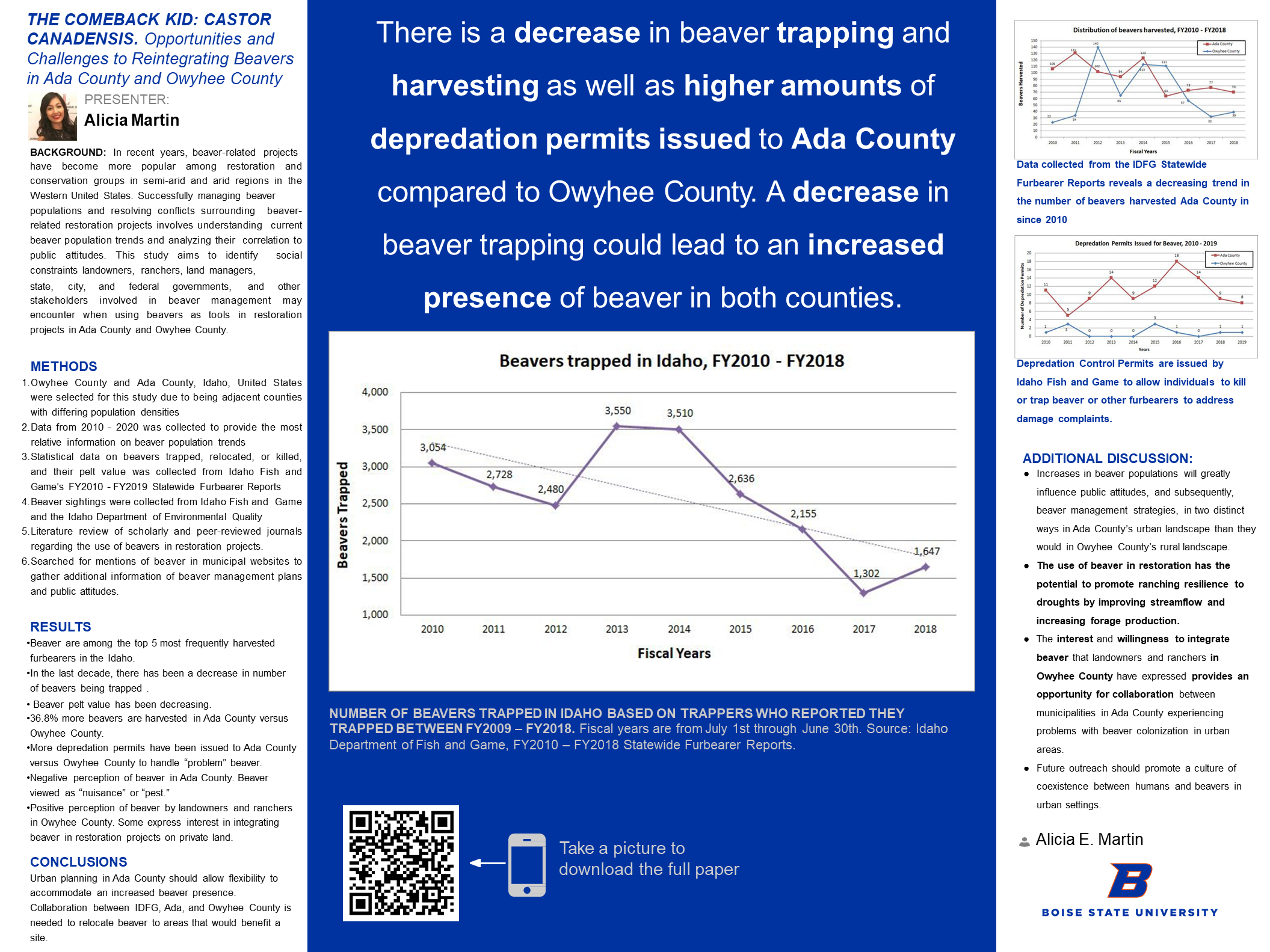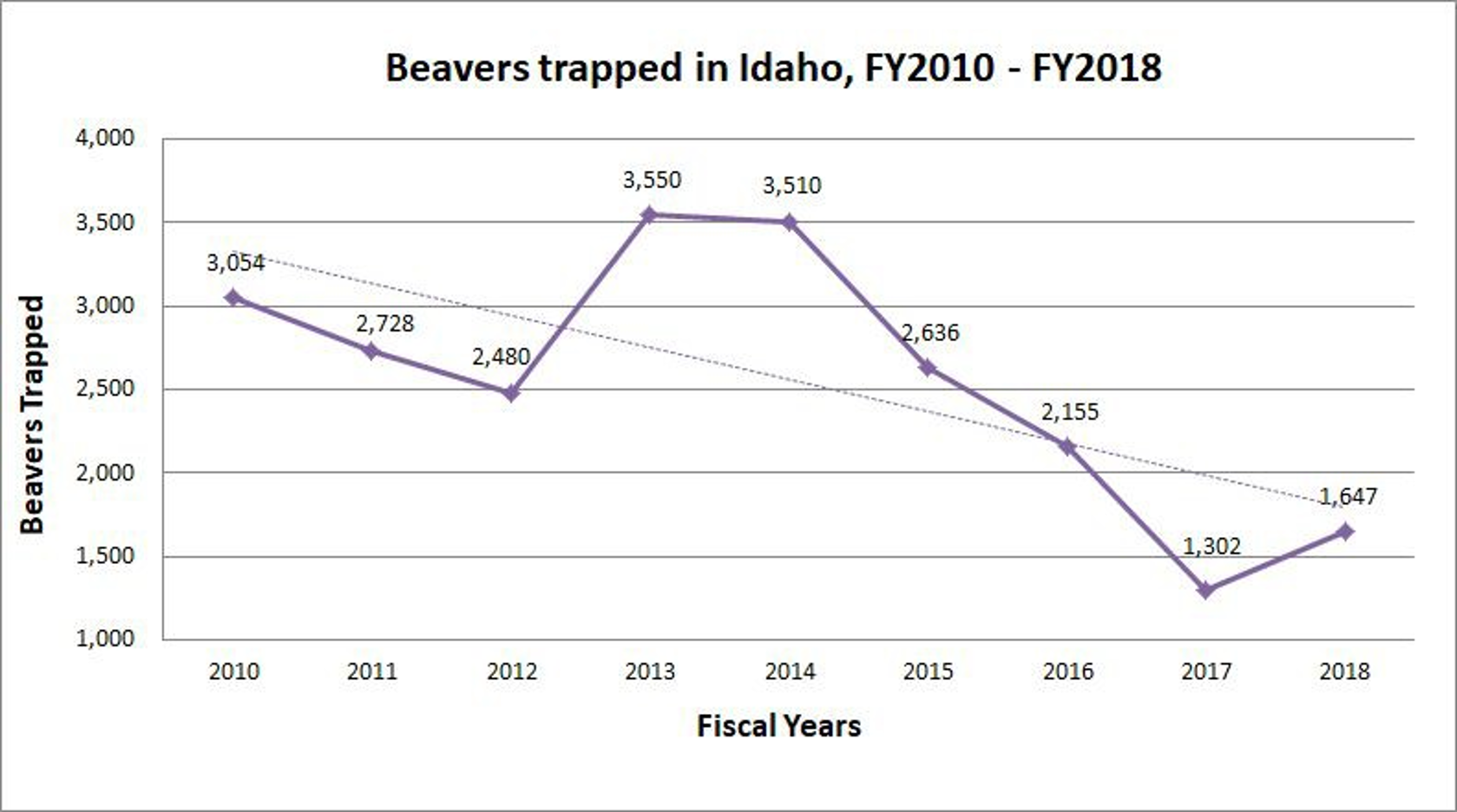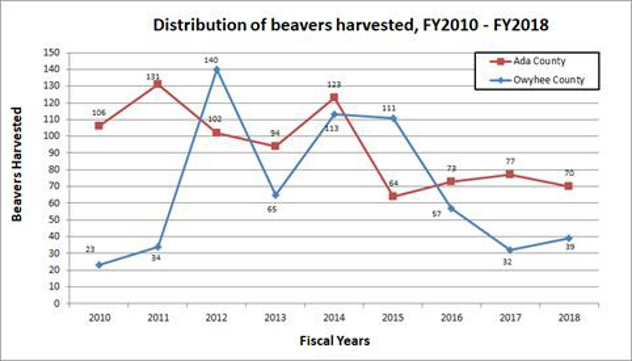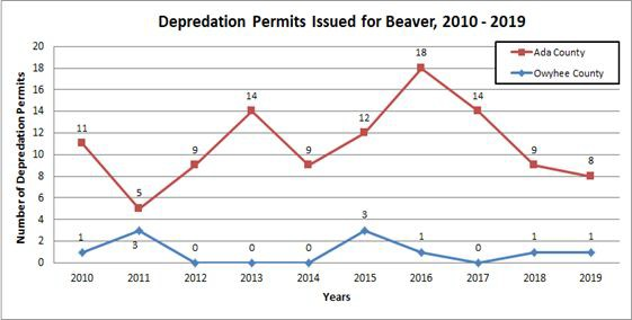Opportunities and Challenges to Reintegrating Beavers in Ada County and Owyhee County
Alicia E. Martin, Dr. Emily Wakild

Background
In recent years, beaver-related projects have become more popular among restoration and conservation groups in semi-arid and arid regions in the Western United States. Successfully managing beaver populations and resolving conflicts surrounding beaver-related restoration projects involves understanding current beaver population trends and analyzing their correlation to public attitudes. This study aims to identify social constraints landowners, ranchers, land managers, state, city, and federal governments, and other stakeholders involved in beaver management may encounter when using beavers as tools in restoration projects in Ada County and Owyhee County.
Methods
- Owyhee County and Ada County, Idaho, United States were selected for this study due to being adjacent counties with differing population densities
- Data from 2010 – 2020 was collected to provide the most relative information on beaver population trends
- Statistical data on beavers trapped, relocated, or killed, and their pelt value was collected from Idaho Fish and Game’s FY2010 – FY2019 Statewide Furbearer Reports
- Beaver sightings were collected from Idaho Fish and Game and the Idaho Department of Environmental Quality
- Literature review of scholarly and peer-reviewed journals regarding the use of beavers in restoration projects.
- Searched for mentions of beaver in municipal websites to gather additional information of beaver management plans and public attitudes.
Results
- Beaver are among the top 5 most frequently harvested furbearers in the Idaho.
- In the last decade, there has been a decrease in number of beavers being trapped .
- Beaver pelt value has been decreasing.
- 36.8% more beavers are harvested in Ada County versus Owyhee County.
- More depredation permits have been issued to Ada County versus Owyhee County to handle “problem” beaver.
- Negative perception of beaver in Ada County. Beaver viewed as “nuisance” or “pest.”
- Positive perception of beaver by landowners and ranchers in Owyhee County. Some express interest in integrating beaver in restoration projects on private land.
There is a decrease in beaver trapping and harvesting as well as higher amounts of depredation permits issued to Ada County compared to Owyhee County. A decrease in beaver trapping could lead to an increased presence of beaver in both counties.
Beavers trapped in Idaho, FY2010 – FY2018

Distribution of beavers harvested, FY2010 – FY2018

Depredation Permits Issues for Beaver, 2010-2019

Conclusions
Urban planning in Ada County should allow flexibility to accommodate an increased beaver presence.
Collaboration between IDFG, Ada, and Owyhee County is needed to relocate beaver to areas that would benefit a site.
Additional Discussion
- Increases in beaver populations will greatly influence public attitudes, and subsequently, beaver management strategies, in two distinct ways in Ada County’s urban landscape than they would in Owyhee County’s rural landscape.
- The use of beaver in restoration has the potential to promote ranching resilience to droughts by improving streamflow and increasing forage production.
- The interest and willingness to integrate beaver that landowners and ranchers in Owyhee County have expressed provides an opportunity for collaboration between municipalities in Ada County experiencing problems with beaver colonization in urban areas.
- Future outreach should promote a culture of coexistence between humans and beavers in urban settings.
Additional Information

For questions or comments about this research, contact Alicia Martin at aliciamartin@u.boisestate.edu.